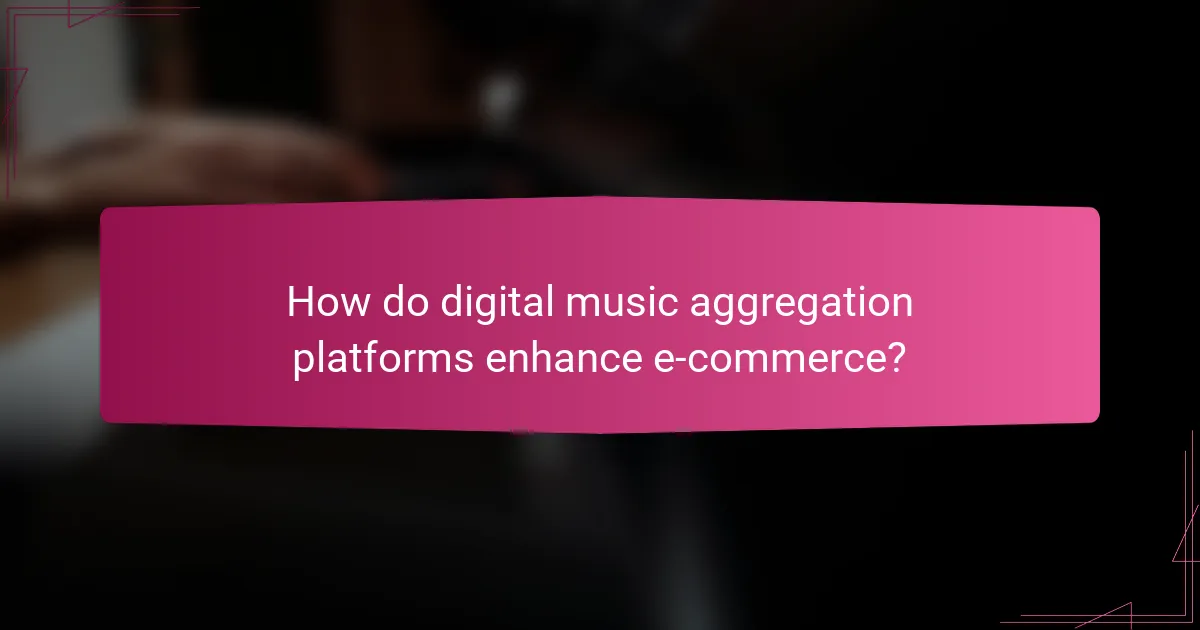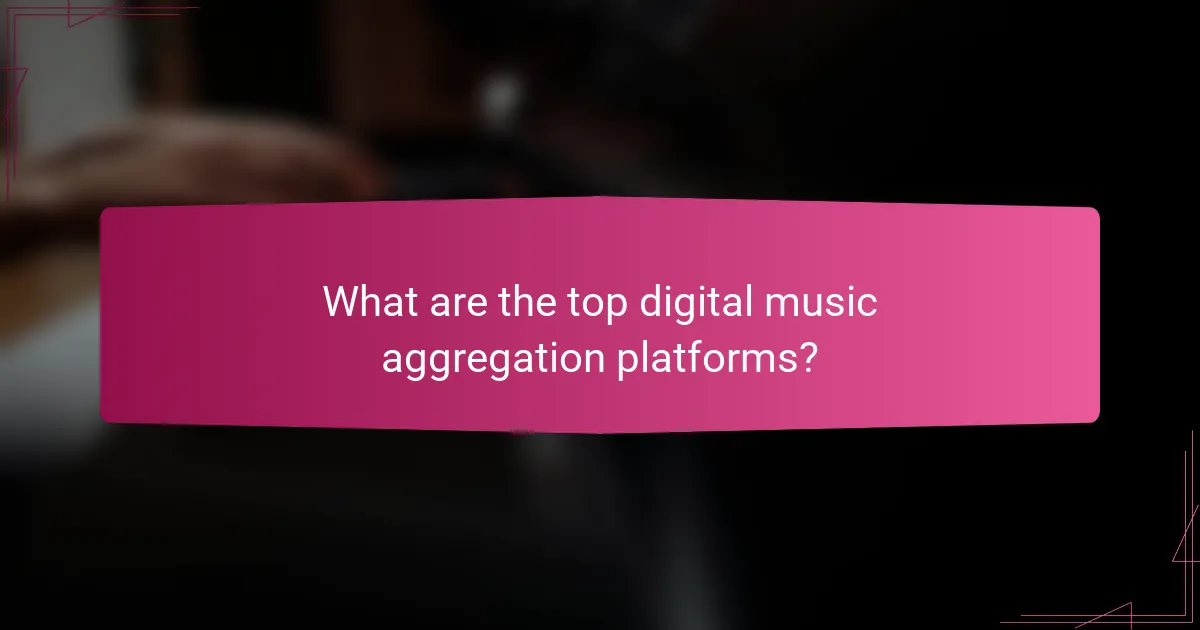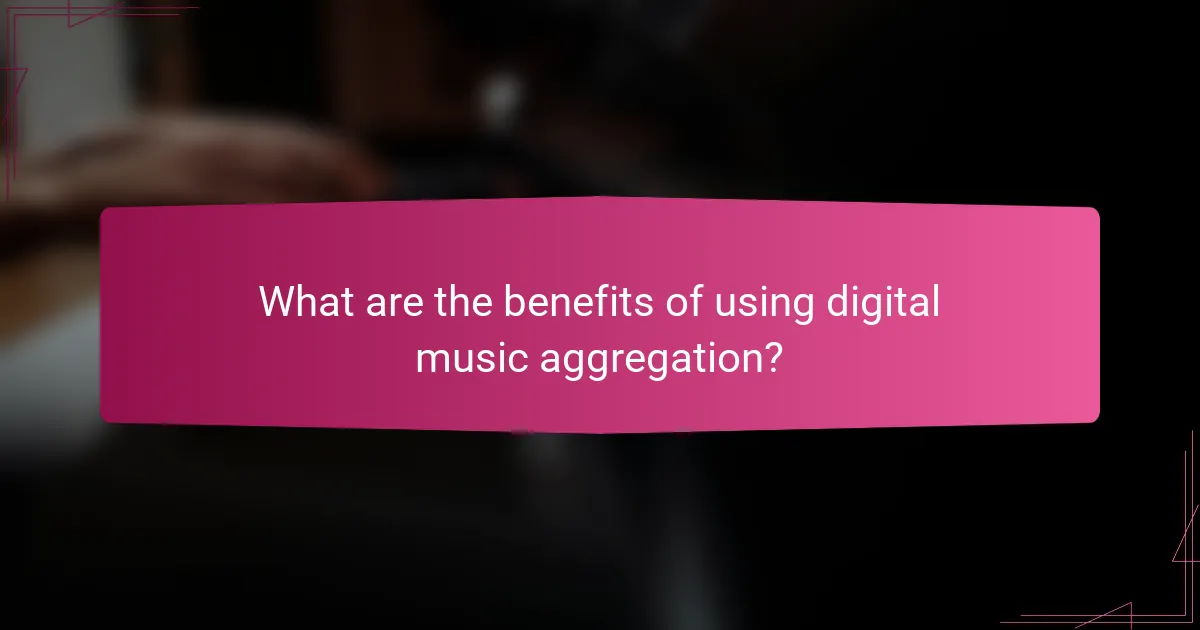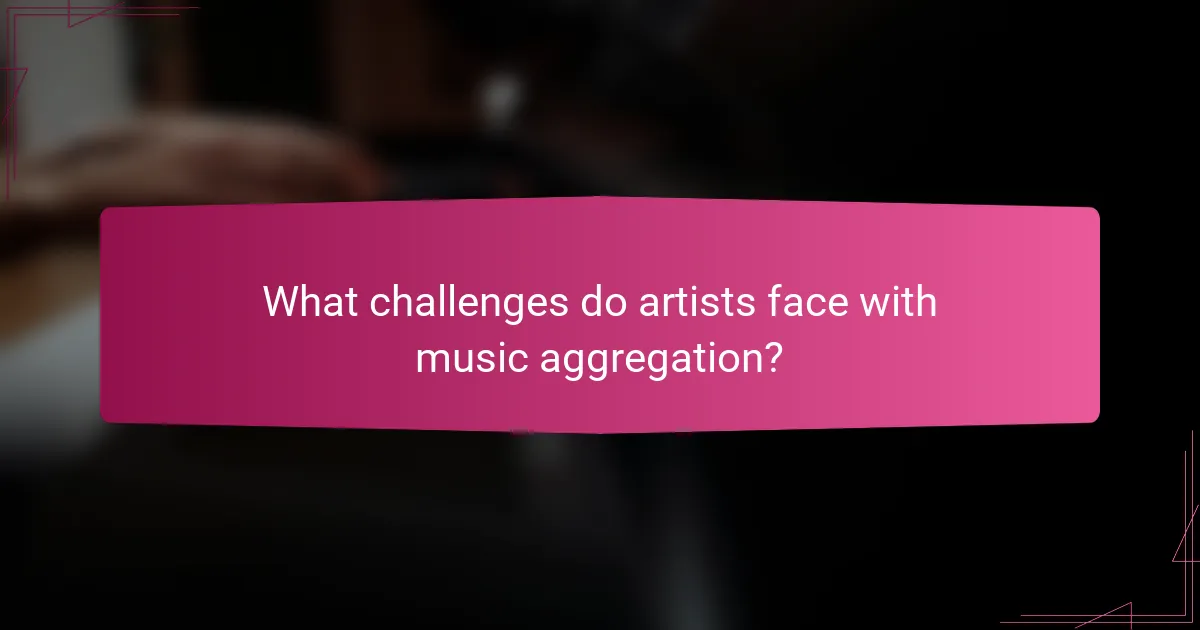Digital music aggregation platforms play a crucial role in connecting artists with e-commerce solutions, facilitating the distribution of music across various online retailers. By offering tools for managing royalties, marketing, and analytics, these platforms empower independent musicians to effectively reach their audience and optimize their sales. Selecting the right aggregator is essential for maximizing revenue and ensuring a smooth distribution process.

How do digital music aggregation platforms enhance e-commerce?
Digital music aggregation platforms enhance e-commerce by simplifying the process of distributing music across various online retailers while providing valuable insights and financial management tools for artists. These platforms streamline operations, making it easier for musicians to reach audiences and manage their sales effectively.
Streamlined distribution to major retailers
Digital music aggregation platforms facilitate the distribution of music to major retailers such as Spotify, Apple Music, and Amazon Music. By using these platforms, artists can upload their tracks once and have them automatically distributed to multiple services, saving time and effort.
Many aggregators offer a user-friendly interface that allows artists to manage their releases, set pricing, and choose which platforms to target. This centralized approach minimizes the complexity of dealing with each retailer individually, making it more accessible for independent musicians.
Integrated sales analytics for artists
These platforms provide integrated sales analytics that help artists understand their performance across different retailers. Artists can access data on sales trends, listener demographics, and geographic reach, which can inform marketing strategies and future releases.
For instance, an artist might discover that their music is particularly popular in a specific region, prompting targeted promotional efforts in that area. This data-driven approach enables musicians to make informed decisions that can enhance their overall e-commerce strategy.
Automated royalty payments
Automated royalty payments are a key feature of digital music aggregation platforms, ensuring that artists receive their earnings promptly and accurately. Once music is sold or streamed, the platform calculates the royalties owed and processes payments without requiring manual intervention.
This automation reduces the risk of errors and delays, allowing artists to focus on their creative work rather than financial tracking. Additionally, many platforms offer transparent reporting on earnings, helping musicians understand their revenue streams better and plan for future projects.

What are the top digital music aggregation platforms?
The top digital music aggregation platforms help independent artists distribute their music across various streaming services and online stores. These platforms typically offer tools for managing royalties, marketing, and analytics, making it easier for musicians to reach their audience and monetize their work.
CD Baby
CD Baby is a well-established digital music aggregator that allows artists to distribute their music to over 150 platforms, including Spotify, Apple Music, and Amazon Music. They offer a straightforward pricing model, charging a one-time fee per album or single, which can range from around $9 to $49 depending on the service level.
One of CD Baby’s key features is its ability to collect and distribute royalties from various sources, including streaming and digital downloads. Artists can also access tools for physical distribution, such as CDs and vinyl, which can be beneficial for those looking to sell merchandise directly to fans.
TuneCore
TuneCore is another popular digital music aggregation service that provides artists with the ability to distribute their music globally. Unlike CD Baby, TuneCore operates on an annual subscription model, charging artists a fee for each release, which can be around $10 to $50 per year, depending on the type of release.
TuneCore is known for its comprehensive reporting tools, allowing artists to track their earnings and performance across platforms. Additionally, they offer services such as publishing administration and sync licensing, which can help artists maximize their revenue streams.
Ditto Music
Ditto Music offers a user-friendly platform for independent musicians to distribute their music to major streaming services. They provide a subscription model that starts at approximately $19 per year, allowing unlimited releases, which can be cost-effective for prolific artists.
Ditto Music also includes promotional tools, such as pre-save campaigns and social media support, to help artists grow their audience. Their focus on emerging markets can be advantageous for artists looking to expand their reach in less saturated regions.

How to choose the right digital music aggregator?
Choosing the right digital music aggregator involves evaluating factors such as pricing, distribution reach, and customer support. These elements will significantly impact your ability to effectively distribute your music and maximize your revenue.
Pricing structures
Pricing structures for digital music aggregators can vary widely. Some platforms charge a flat fee per release, while others take a percentage of your sales. It’s essential to compare these models to determine which aligns best with your budget and expected sales volume.
For example, some aggregators may charge between $10 to $50 per release, while others might take 15% to 30% of your earnings. Consider your anticipated income and choose a model that minimizes costs while maximizing profits.
Distribution reach
The distribution reach of a digital music aggregator determines where your music will be available. Look for platforms that partner with major streaming services like Spotify, Apple Music, and Amazon Music, as well as smaller niche platforms that cater to specific audiences.
Some aggregators may offer global distribution, while others might focus on specific regions. If you aim to reach international listeners, ensure the aggregator has a robust global network.
Customer support options
Customer support is crucial when navigating the complexities of music distribution. Check if the aggregator provides multiple support channels, such as email, live chat, or phone support, and their availability hours.
Some platforms offer extensive resources like FAQs and community forums, which can be helpful. Prioritize aggregators with responsive and knowledgeable support teams to assist you with any issues that may arise during your distribution process.

What are the benefits of using digital music aggregation?
Digital music aggregation offers artists and labels a streamlined way to distribute their music across various platforms, enhancing visibility and sales potential. By utilizing these services, creators can focus on their art while benefiting from increased reach and efficiency in managing their music distribution.
Increased market exposure
Using digital music aggregation significantly boosts market exposure by allowing artists to reach a global audience. Aggregators distribute music to major streaming services like Spotify, Apple Music, and Amazon Music, which can lead to higher listener engagement and potential revenue growth.
For example, an independent artist can gain access to millions of listeners without needing to negotiate individual contracts with each platform. This broad distribution can enhance brand recognition and fan base expansion.
Access to multiple platforms
Digital music aggregators provide access to a wide range of platforms, ensuring that music is available wherever listeners prefer to stream or purchase. This includes not only popular streaming services but also niche platforms that cater to specific genres or demographics.
By distributing music across various platforms, artists can tap into different listener markets, increasing their chances of success. For instance, a genre-specific platform may attract a dedicated audience that mainstream services might overlook.
Time-saving automation
Automation is a key benefit of using digital music aggregation, as it simplifies the distribution process. Aggregators handle tasks such as uploading music, managing metadata, and tracking royalties, which saves artists valuable time that can be redirected toward creating new music.
Additionally, many aggregators offer analytics tools that provide insights into listener behavior and sales performance. This data can help artists make informed decisions about marketing strategies and future releases, enhancing overall efficiency in their music careers.

What challenges do artists face with music aggregation?
Artists encounter several challenges with music aggregation, primarily related to understanding complex contracts and navigating revenue sharing models. These hurdles can impact their earnings and overall experience in the digital music landscape.
Complexity of contracts
The contracts associated with music aggregation can be intricate and difficult to comprehend. Artists often face legal jargon that obscures key terms, making it challenging to understand their rights and obligations.
Many agreements include clauses about distribution rights, exclusivity, and termination conditions. Artists should carefully review these elements and consider seeking legal advice to avoid unfavorable terms that could limit their creative freedom or revenue potential.
Revenue sharing models
Revenue sharing models vary significantly among music aggregation platforms, affecting how much artists earn from their music. Common models include flat-rate fees, percentage splits, or tiered structures based on sales performance.
For example, some platforms may take a 15-30% cut of earnings, while others might offer a more favorable split for higher sales volumes. Artists should compare these models and choose a platform that aligns with their financial goals and expected audience reach.
